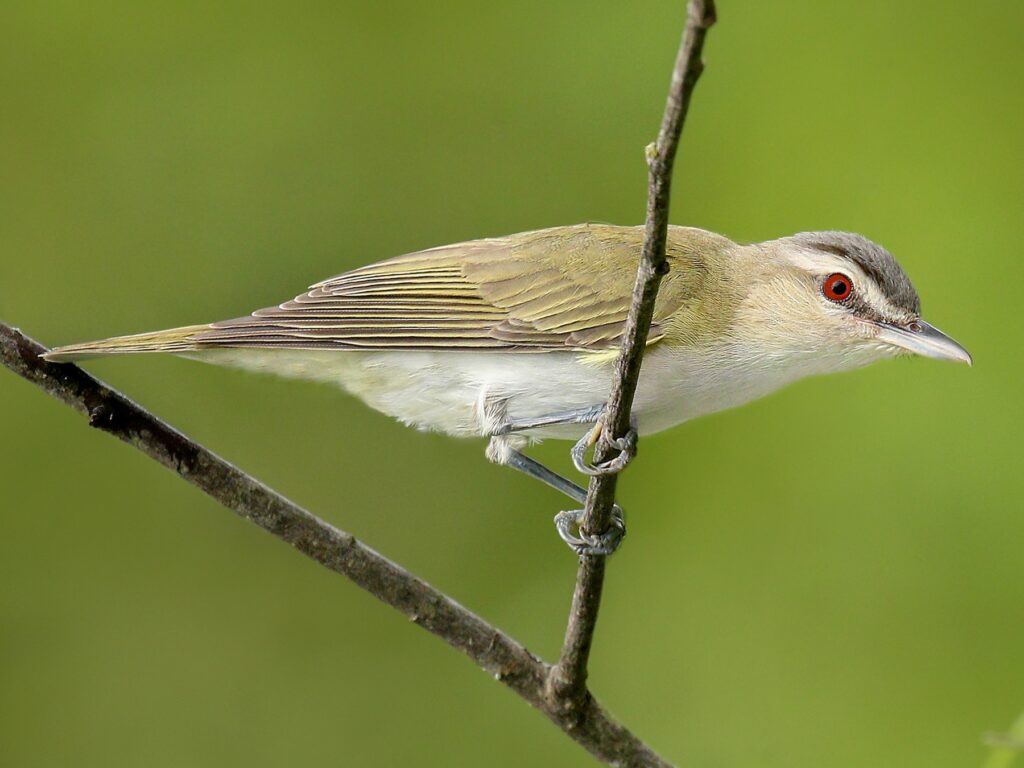While planting trees over the last two weeks at the Schuylkill Center, a familiar sound echoed through our Roxborough woods, something like an ethereal organ being played in the forest. I smiled: the wood thrush is back.
The wood thrush—a cousin of the robin and about the same size, but with a cinnamon coat and dramatic black spots on a bright white chest—is widely considered the best singer of all songbirds. No less an observer than Henry David Thoreau agreed. “The thrush alone declares the immortal wealth and vigor that is in the forest,” he wrote. “Whenever a man hears it, he is young, and Nature is in her spring. It is a new world and a free country, and the gates of heaven are not shut against him.”
Doesn’t that alone make you want to go hear one? The “ethereal” piece is because, almost uniquely, the bird uncannily can whistle two notes simultaneously, harmonizing with itself to produce the ringing that is so entrancing. Even better, it often sings at both sunrise and sunset, making it one of the first as well as one of the last birds you might hear during the day.
A creature of the interior forest and an important indicator of forest health, the thrush has become a symbol of the vanishing American songbird; one study estimated that its population has declined 62% since 1966 in eastern North America. Forest fragmentation is often cited as a chief reason for its decline, as it requires more than small suburban woodlots, and fragmented forests offer fewer places to escape predators. The brown-headed cowbird, a social parasite that lays its eggs in other birds’ nests, will stay out of deep interiors, but can easily find thrushes in smaller forests—and lay its eggs in the nest, its nestling outcompeting baby thrushes for parental attention.
It’s also a victim of being migratory. While North American forests are fragmenting, Central and South American forests—its winter home—are disappearing too, so, like many birds, the wood thrush is being hit at both ends of its migration.
But the first time I hear one every April at the Schuylkill Center, I stop and savor the sound: the gates of heaven have just opened. Please come and hear, maybe even see, it yourself.
And there’s a second bird I’d love for you to hear, this one the most common bird you’ve never heard of. If you have ever walked through a summertime forest anywhere in the Philadelphia region, you have heard this bird—and heard it, and heard it, and heard it.
Because the red-eyed vireo may just be the most abundant forest bird across Pennsylvania. Warbler-small and usually gleaning insects high up in the treetops, the bird sings incessantly, holding an ongoing monologue of usually three-noted sounds, some rising, some falling, as if it were asking and answering its own questions: “How are you? I am fine. Doing well. Pretty good. Are you sure?”
And it does have a red eye, but while I have heard thousands of vireos sing, I can count on only one hand the number of times I have actually seen the red eye—and the first time made me scream with delight. If you can see the red eye, you’ll also catch the two black stripes sandwiching a white one, slicing right through the red eye.
The name vireo is Latin for “I am green,” which its body feathers are—sort of. Its species name olivaceus only drives home that point in case you missed it the first time.
It builds one of the smallest non-hummingbird nests, a petite cup that dangles from the crotch of a high tree branch, held together with a number of fibers—and spider silk. These nests are even harder to find than the vireo’s eye.
The red-eye may be the most prominent member of a clan of songbirds, others of which drive even expert birders batty. There’s currently a solitary vireo hanging out behind the Schuylkill Center’s preschool classrooms that one of our teachers—an ace bidder herself—has been hearing. So consider the red-eye your gateway into the vireo kingdom. If you’ve heard one, challenge yourself to see the eye; if you’ve never heard of this bird, here’s a wonderful assignment for you.
Go for a walk this week, and listen for both the organ pipes of the thrush and the chatty monologist, the red-eyed vireo. The gates of heaven will open for you too.
—Mike Weilbacher, Executive Director

